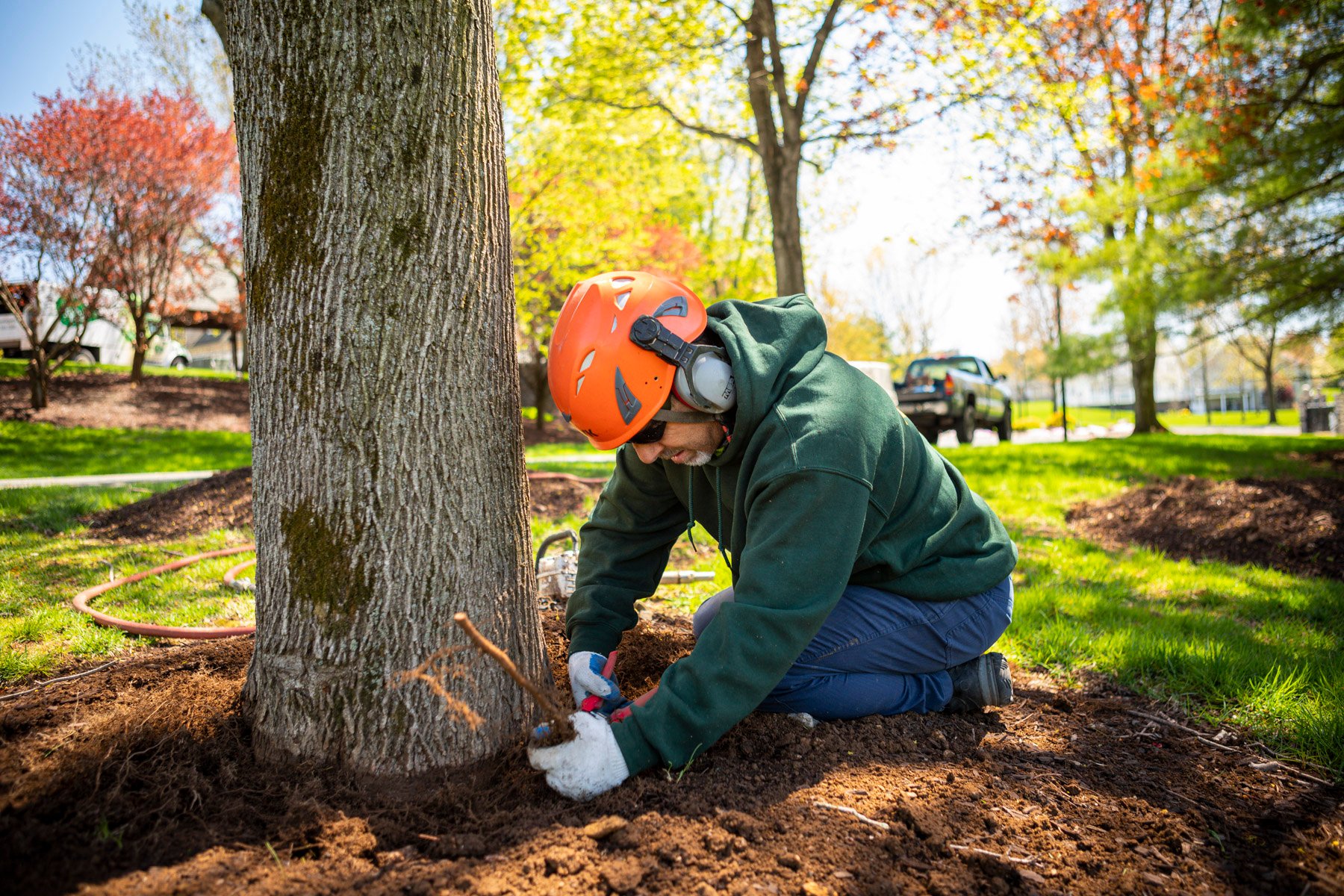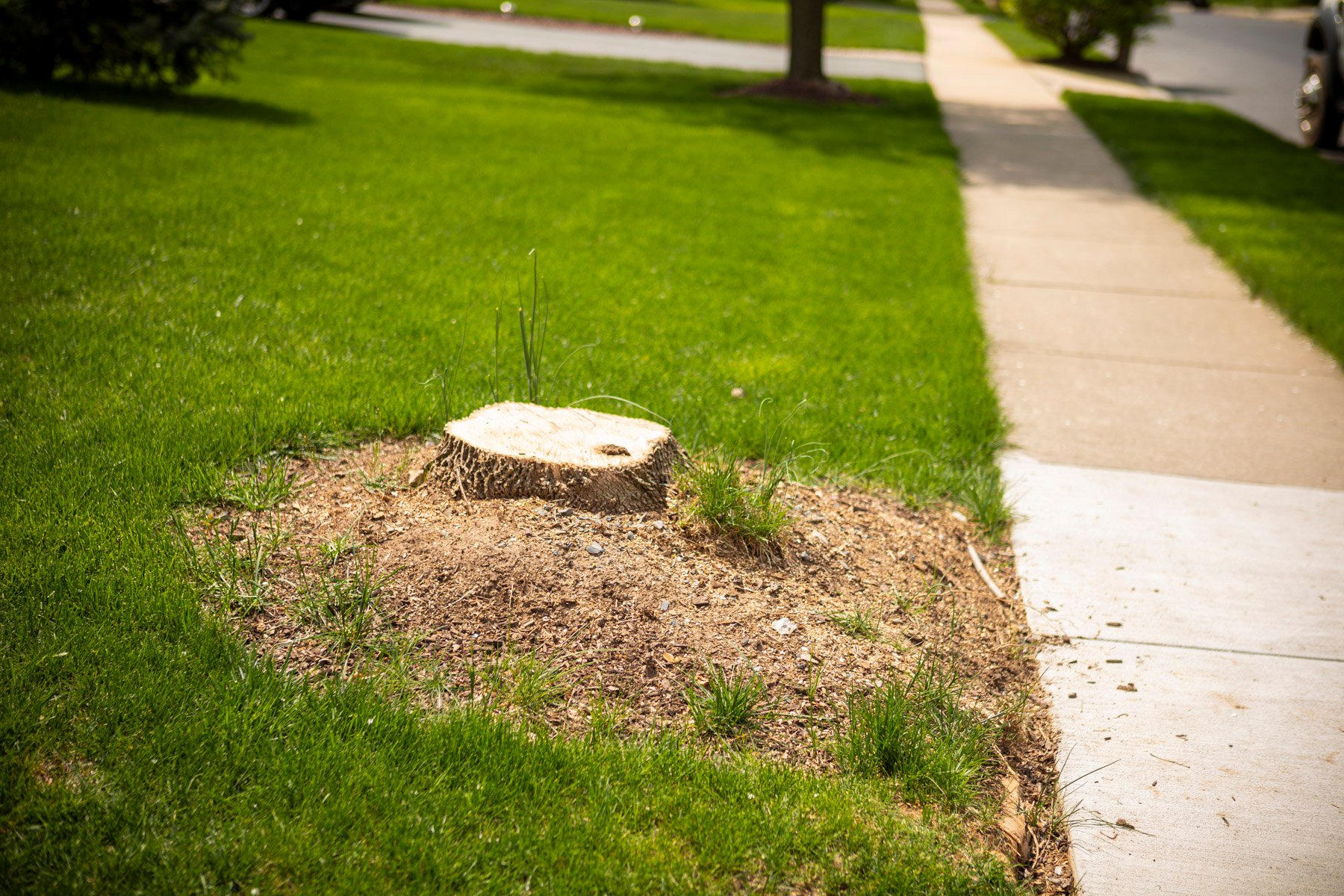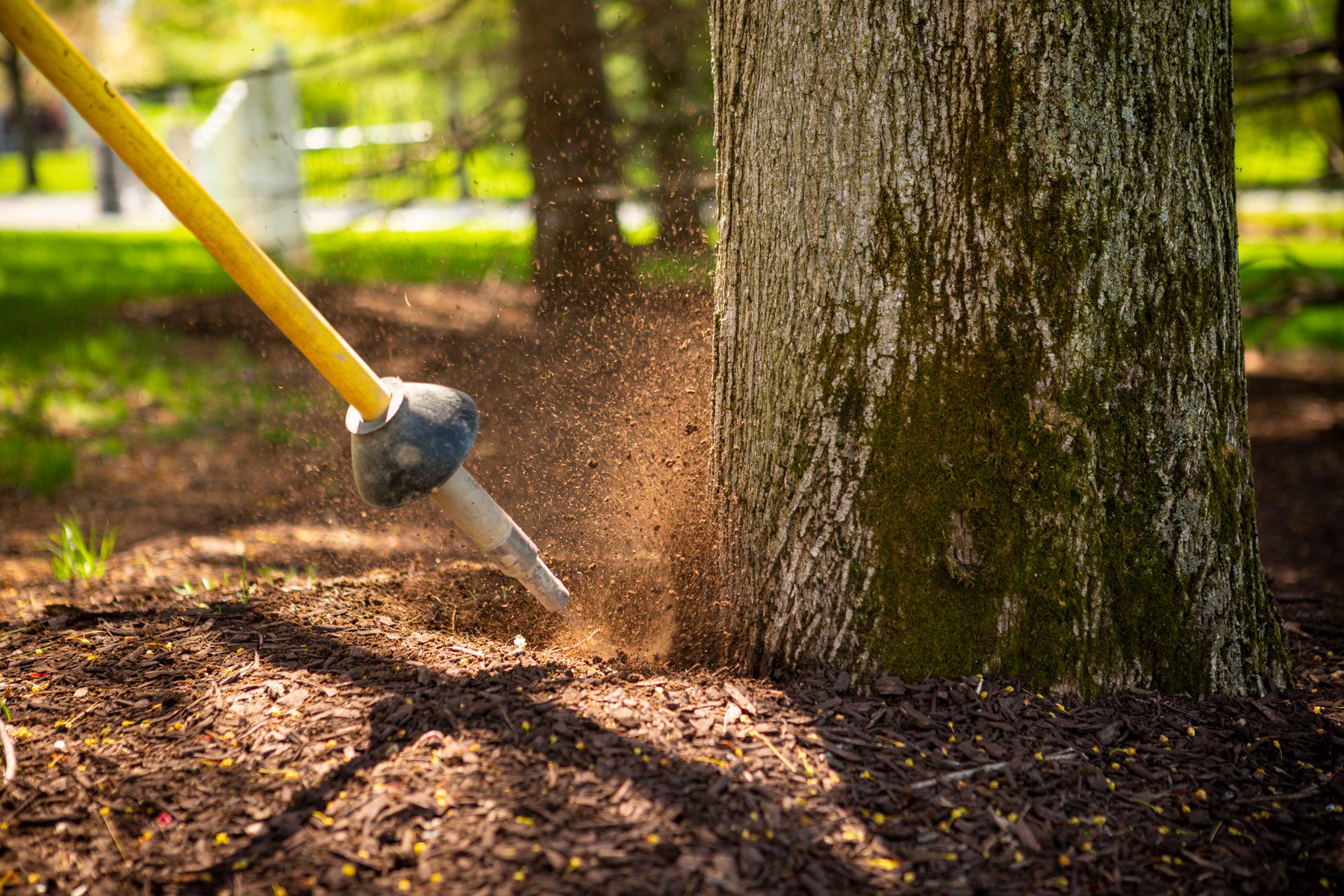While trees are subject to a number of different problems in the landscape including pests, diseases, and even environmental stressors, people are not always familiar with the issues caused by a buried root collar.When the root collar (the base of the tree trunk) is buried, it can lead to some significant problems for your tree, including its potential decline. This is why root collar excavation is sometimes a necessary service to preserve the health of your tree.
In this article, we’ll talk about how to deal with root collar disorders and why root collar excavation might be your best course of action.
What is the Root Collar vs. the Root Flare
First, let’s talk about some tree anatomy basics. “Root Flare” is just another name for the root collar.

This area is sometimes also called the “heart of the tree.” It’s the area where the trunk intersects with the major lateral roots. It’s important that the root collar is visible (as opposed to being buried).
Unfortunately, sometimes a tree is improperly planted, and the root collar is buried. When homeowners or inexperienced landscapers install a tree they sometimes pile the soil up against the trunk. This is NOT healthy for the tree and can lead to root collar disorders.
Sometimes this occurs during mulching. A tree might have been planted correctly but an improper mulching service is performed in which the mulch is piled against the trunk. This is called a “mulch volcano” and it is an improper practice (even though some landscapers still do it).
The correct way to mulch is creating what looks like a “donut” as opposed to a “volcano.” Nothing should be piled against the trunk.
Why is a Buried Root Collar so Bad?
Piling dirt or mulch against the tree trunk may not seem like such a big deal. But we assure you, it is very bad for the tree’s health.
The problem with a buried root collar is that the mulch or soil causes the trunk to stay moist and damages its cells. While the roots were made to be able to handle and absorb moisture, the trunk was not.
Over time, this will decompose the bark and put stress on the tree.
Those damaged tree cells will also stop performing properly. You may start to see tree warping or even the beginning of insect or disease infestations, as the tree weakens over time.

Along with that, girdling roots are a common result of a buried root collar. This is when the roots start to grow in a circular pattern around the trunk itself. As the roots encircle the tree, it can begin to lead to the tree’s decline.
Girdling roots prevent water and nutrients from entering the tree as they were meant to. Eventually, girdling roots can suffocate the tree and lead to its death.
What is Root Collar Excavation?
While the problems caused by root collar burial can be severe, the good news is that there are usually solutions. Trees grow slowly, so there’s usually plenty of time to fix these issues before they lead to your tree’s death.
The answer for a buried root collar is a process called root collar excavation. This process is also sometimes referred to as air spade excavation due to the use of a piece of machinery called an “air spade.”
With a root collar excavation, we are doing exactly what the name implies. We are excavating the buried collar. It’s important that this is done carefully so as to not damage the root collar even further.
This is why the best practice involves using an air spade, which is powered by compressed air. With an air spade, there’s no risk of accidentally hitting the root collar, as there would be with digging tools.
Of course, you want to correct issues like these as soon as possible. It’s also easier to correct these problems in a young tree. The older the tree is (and the longer it’s been struggling), the more complicated it can become. In some severe cases, such as a tree with significant root girdling, there may be no fix.
Do I Need Root Collar Excavation?
Most of the time, when homeowners reach out to us, they don’t know what’s wrong with their tree (nor would we expect them to). They can recognize that their tree has declined in health, but they don’t know why.

It’s always important to have a tree care professional evaluate your tree and determine the best course of action.
If it’s determined that your tree’s issues are the result of a buried root collar, then a root collar excavation could be the next best step.
Professional Tree Care from Certified Arborists
As with any tree problems, it always helps to work with a pro. Tree issues can be complicated and you’re going to need a tree care expert on your side.
At Joshua Tree Experts, we’re ready to help with any of your potential tree problems. We offer services like root color excavation, disease and pest management, tree pruning and more.
With a team of certified arborists supporting you, you can get back to enjoying your property without worries.
If you’d like to have a tree on your property assessed, contact us for a free consultation. Then you can rest assured knowing that we’ve got it completely under control.



